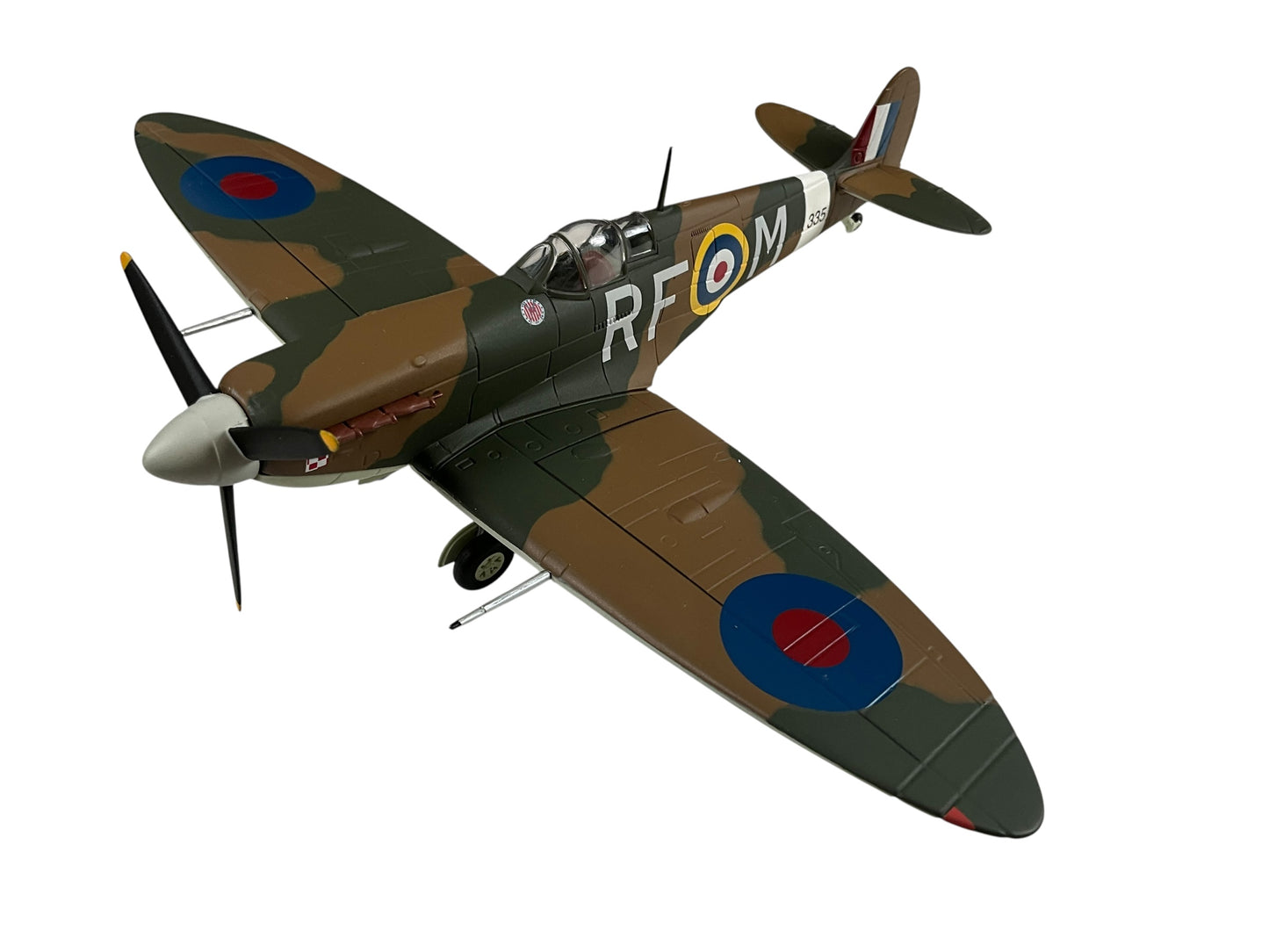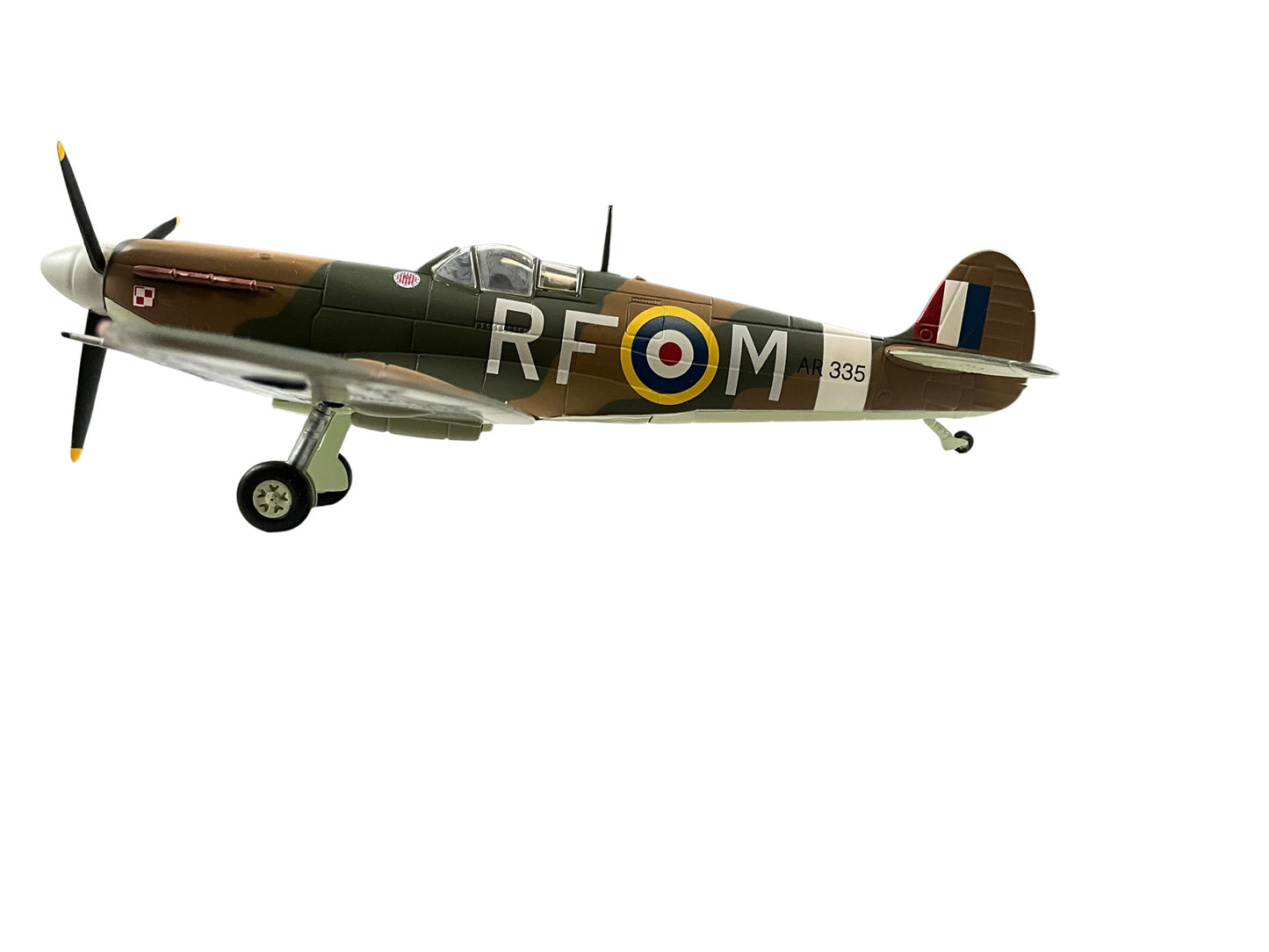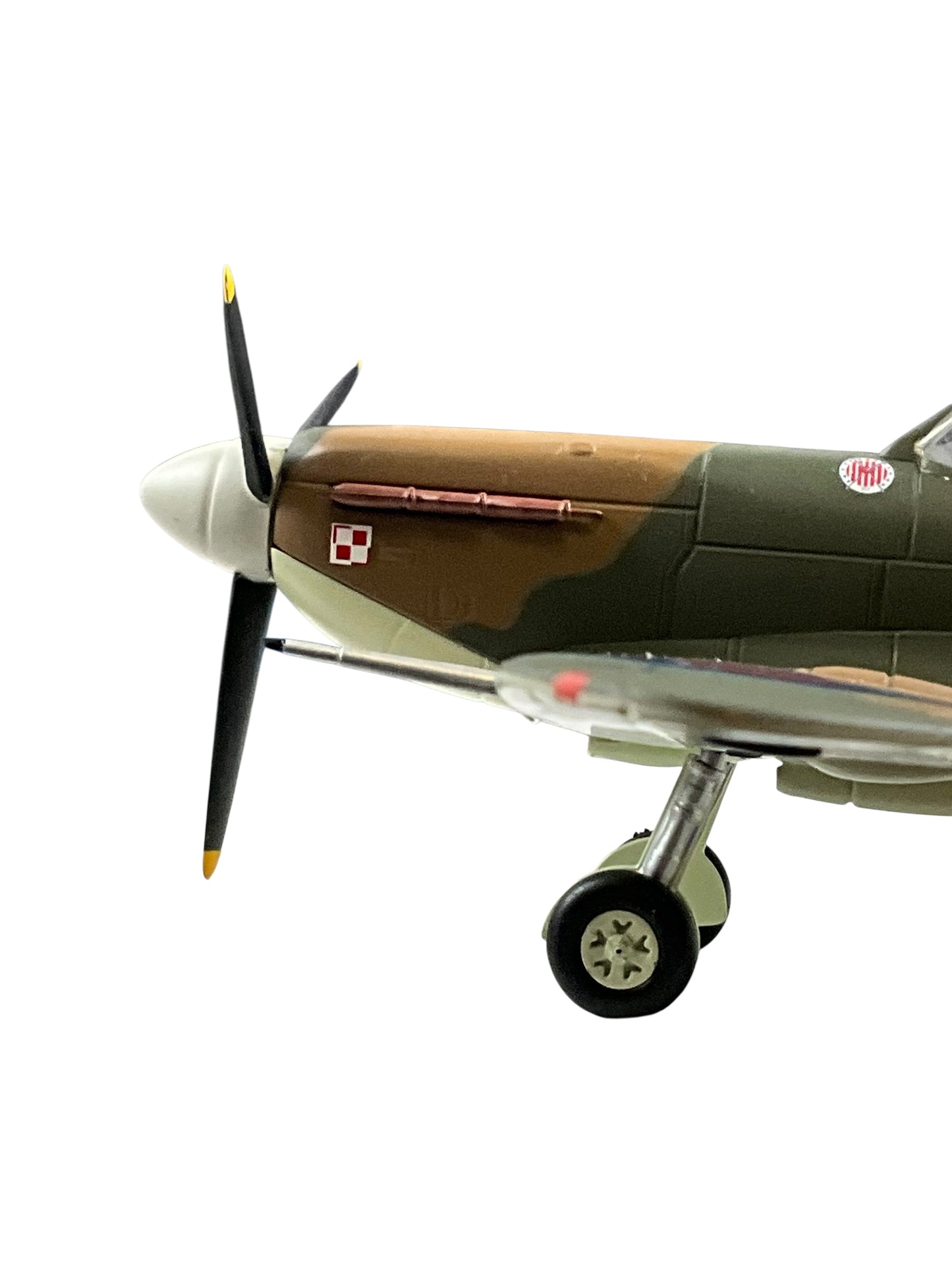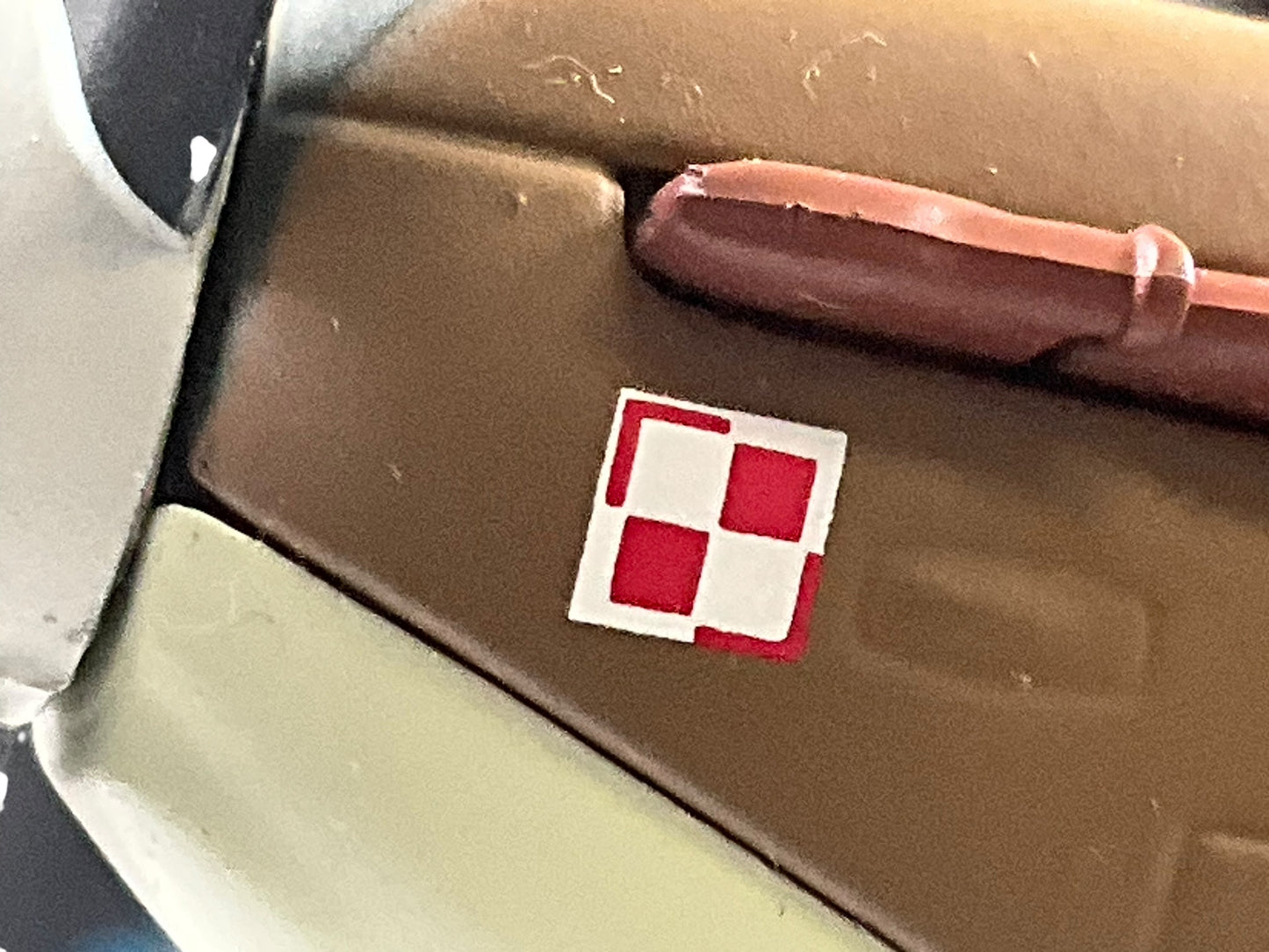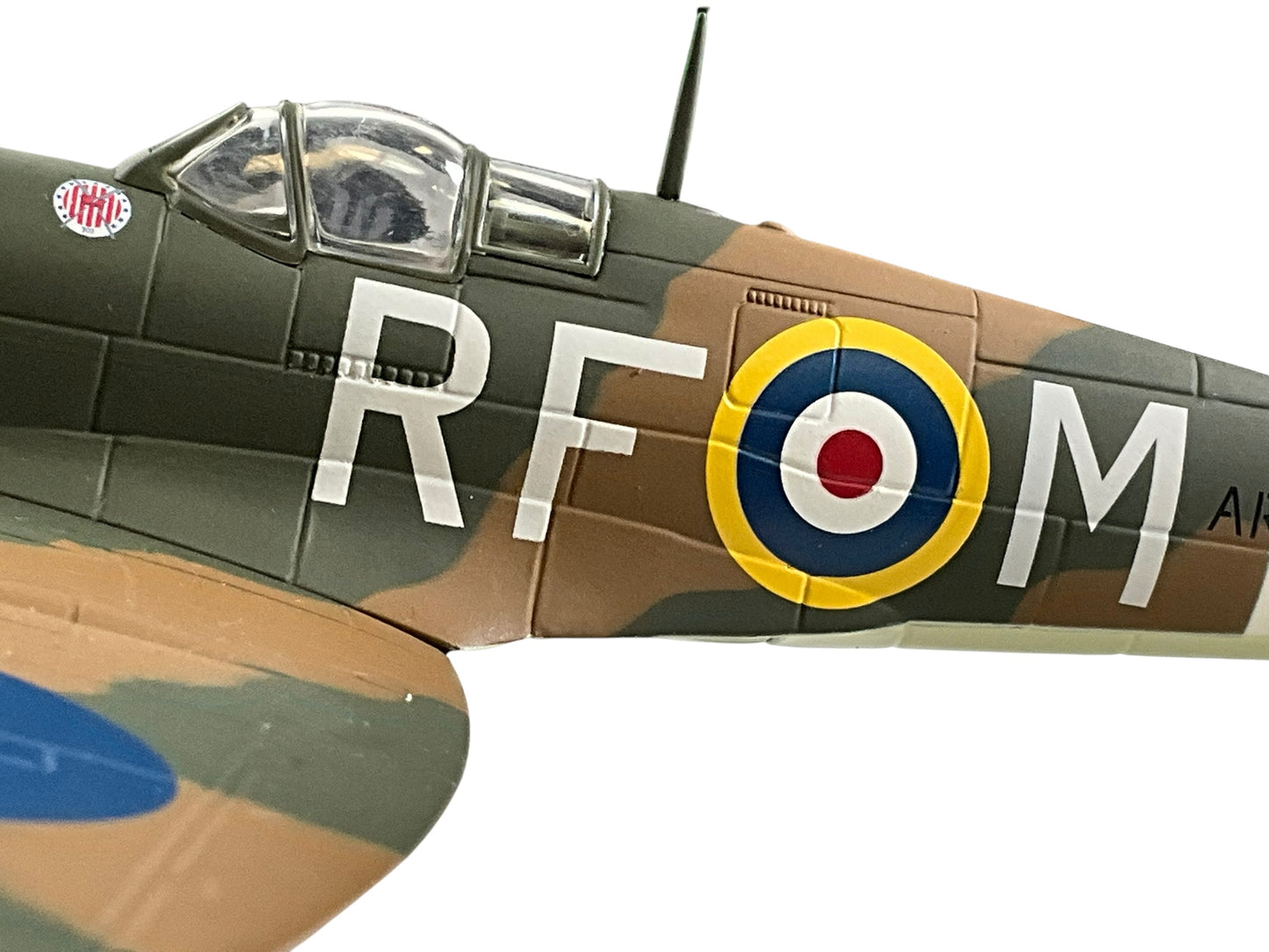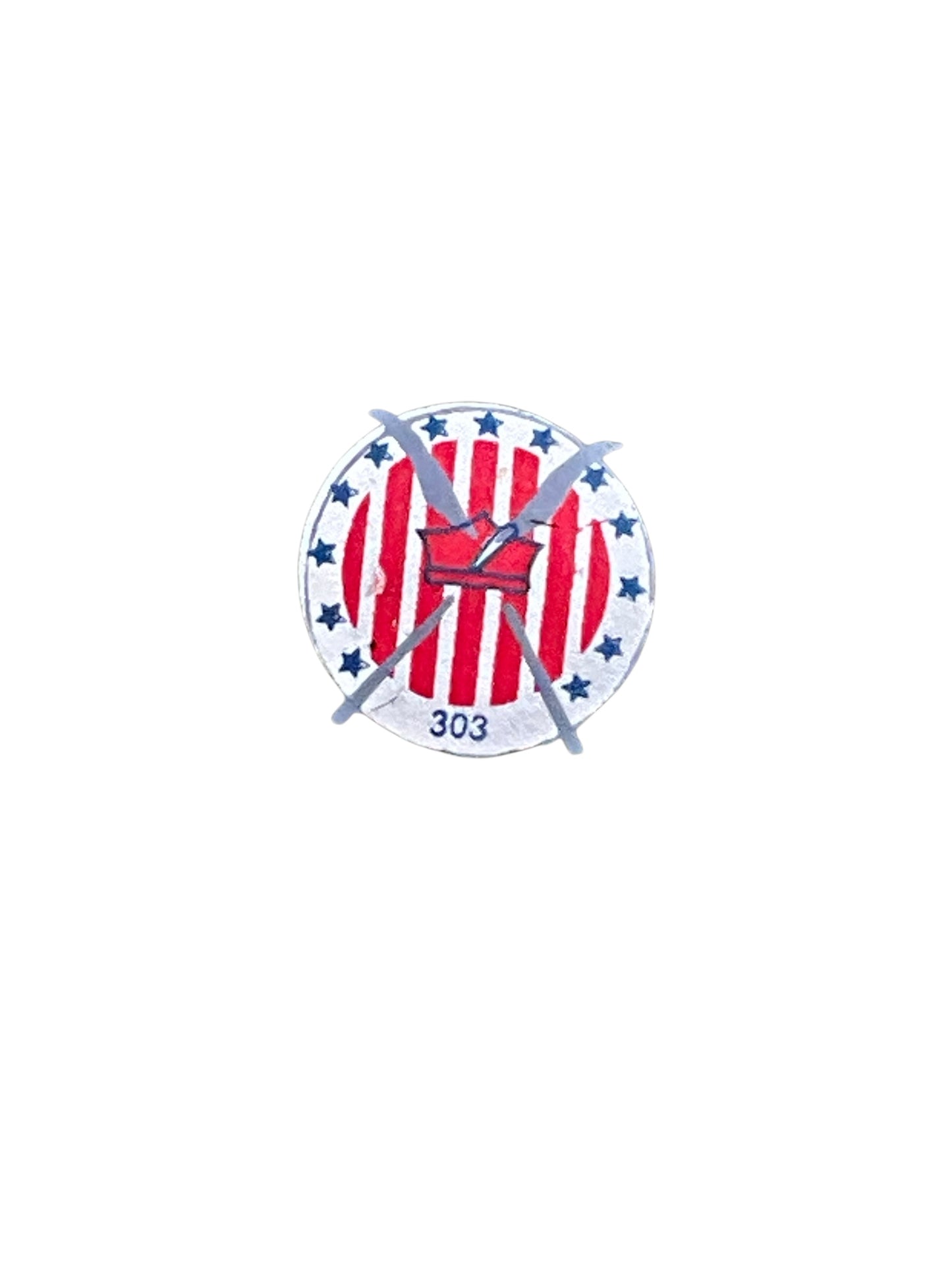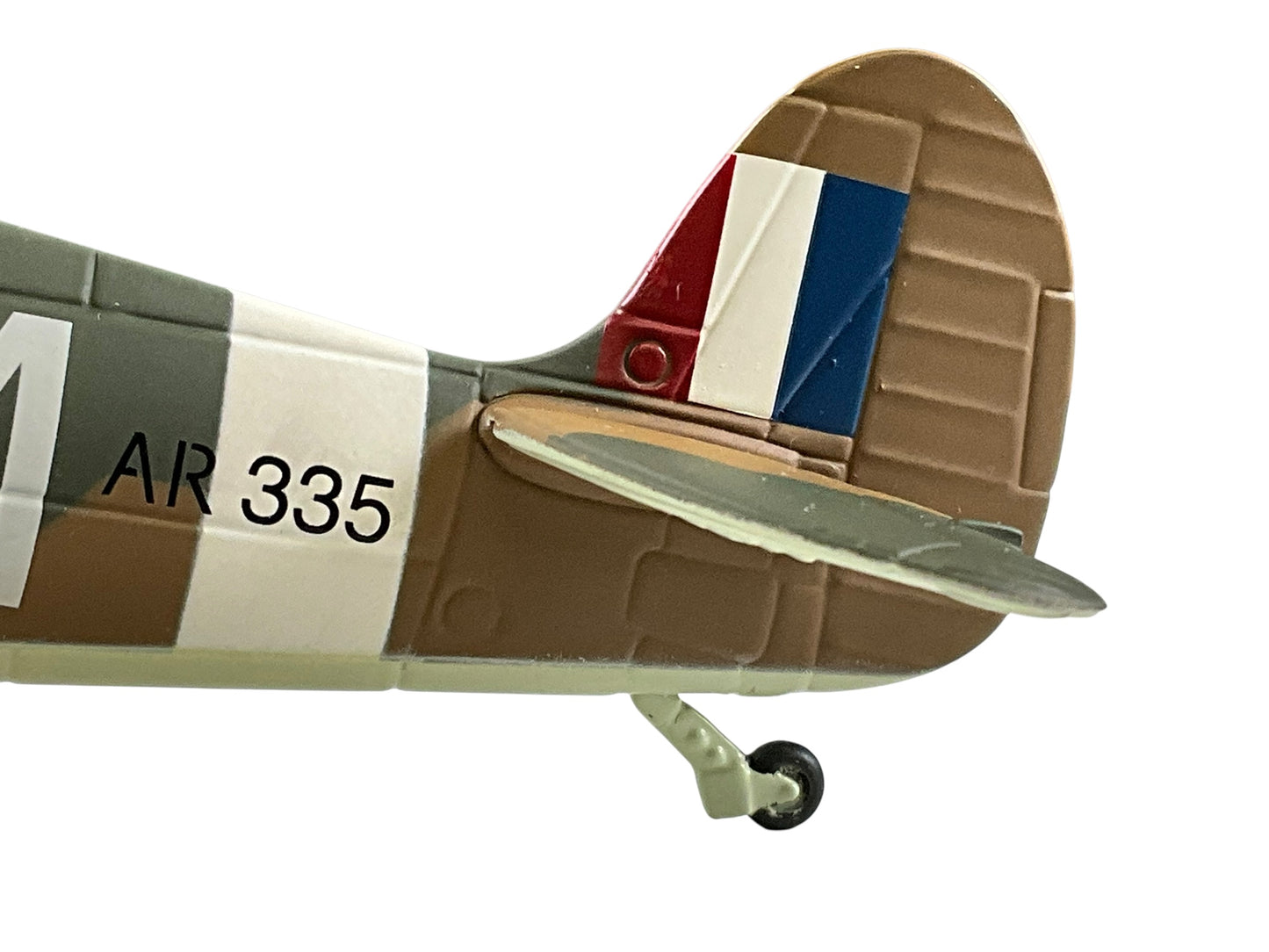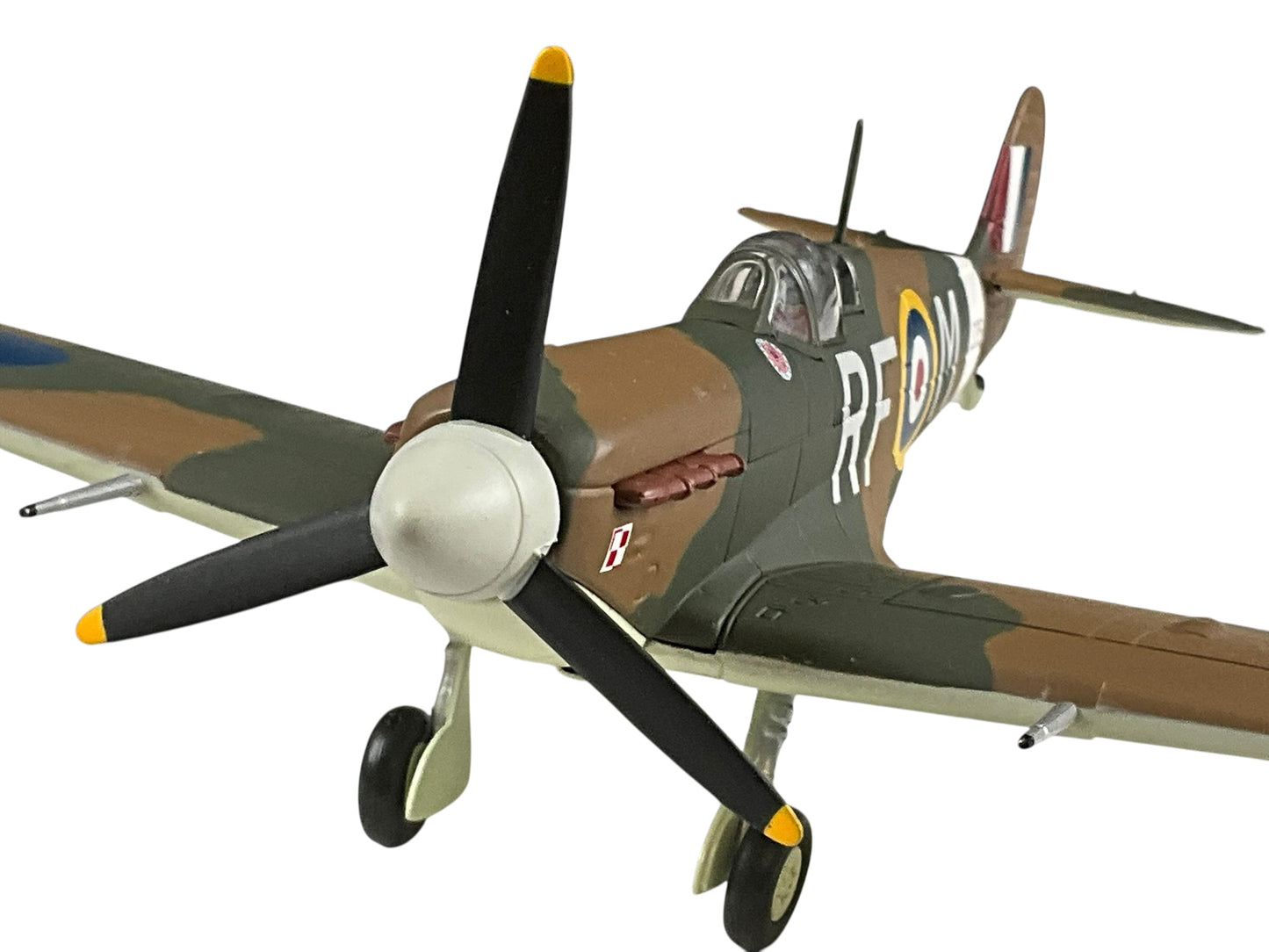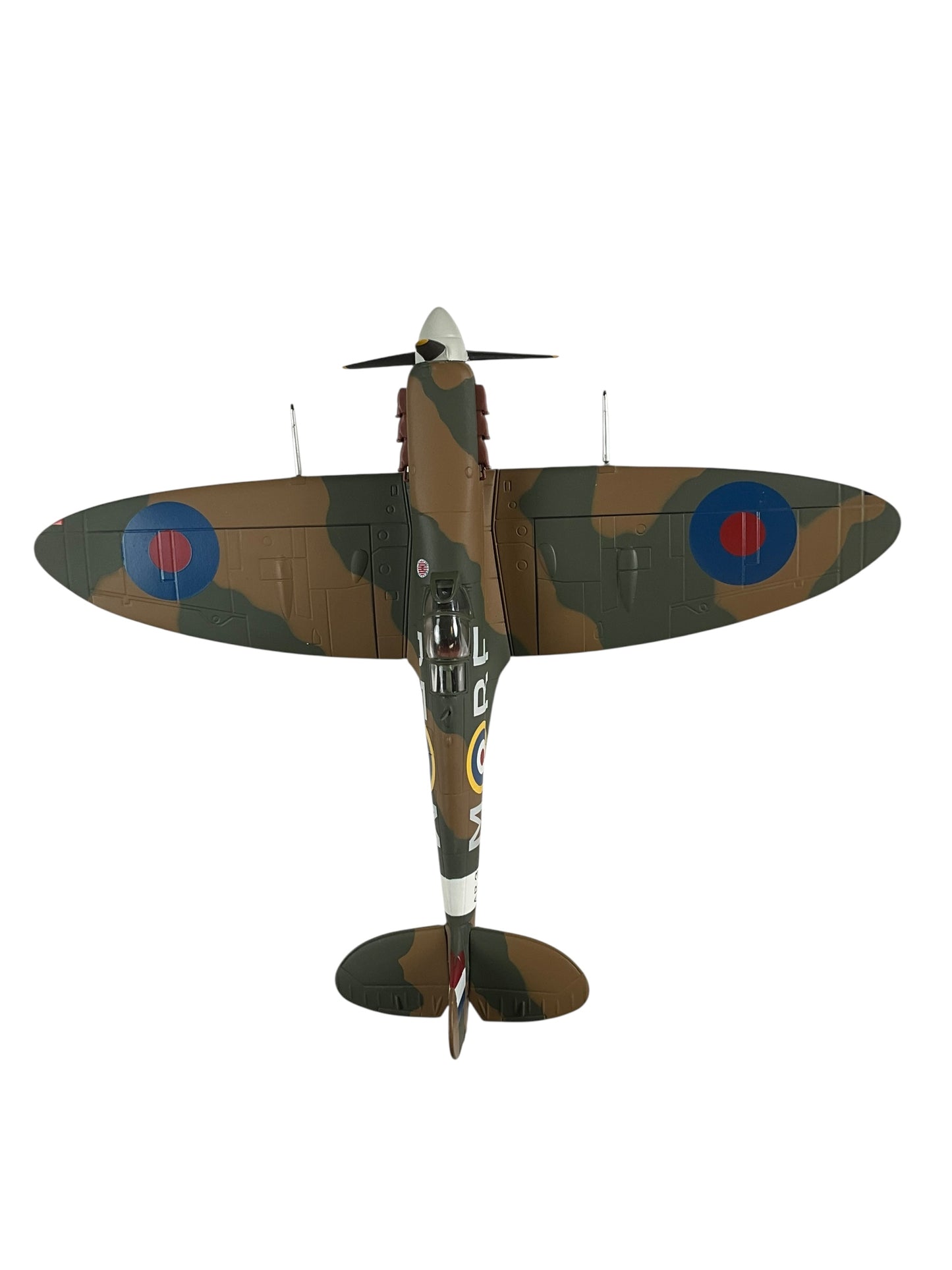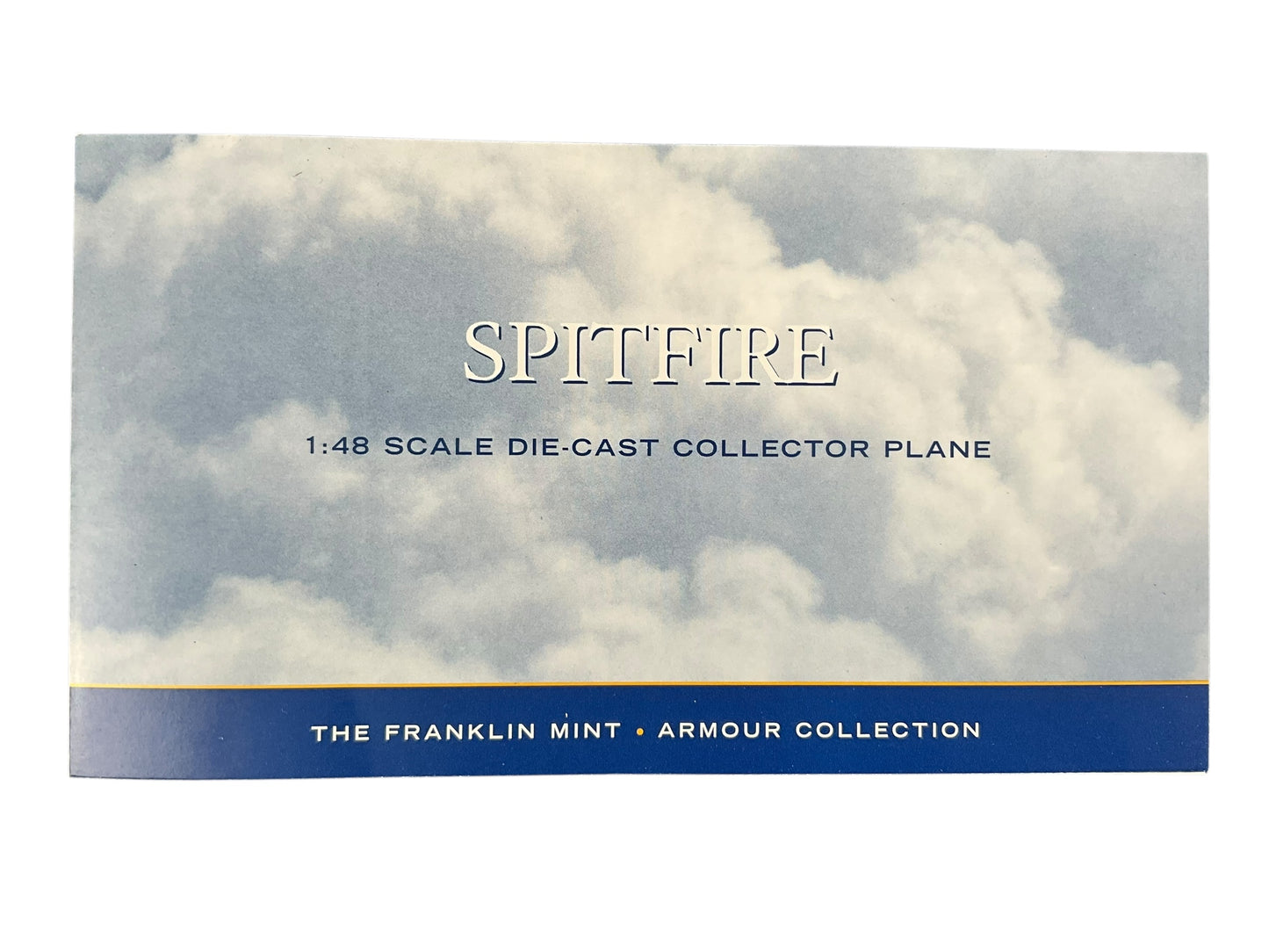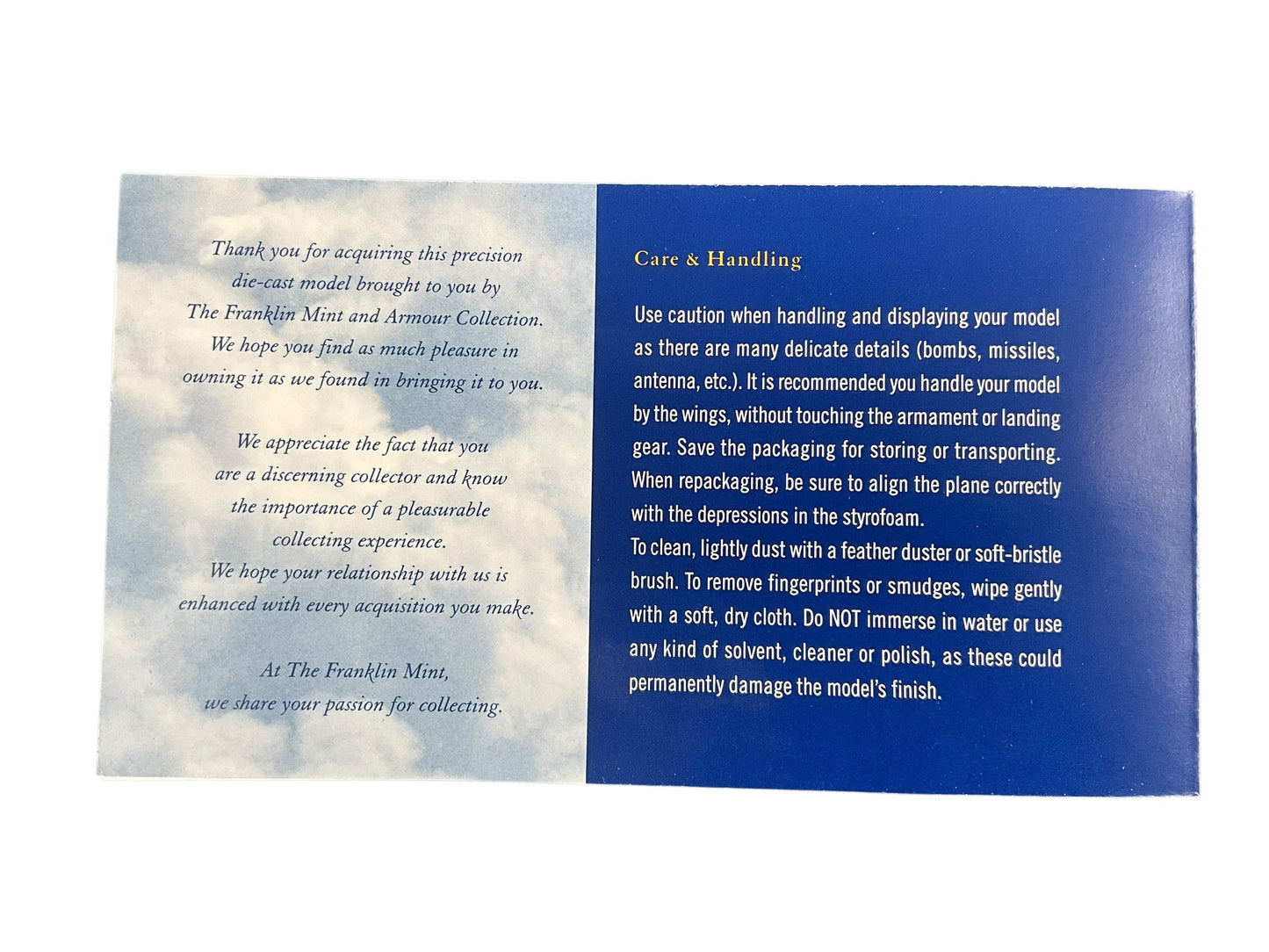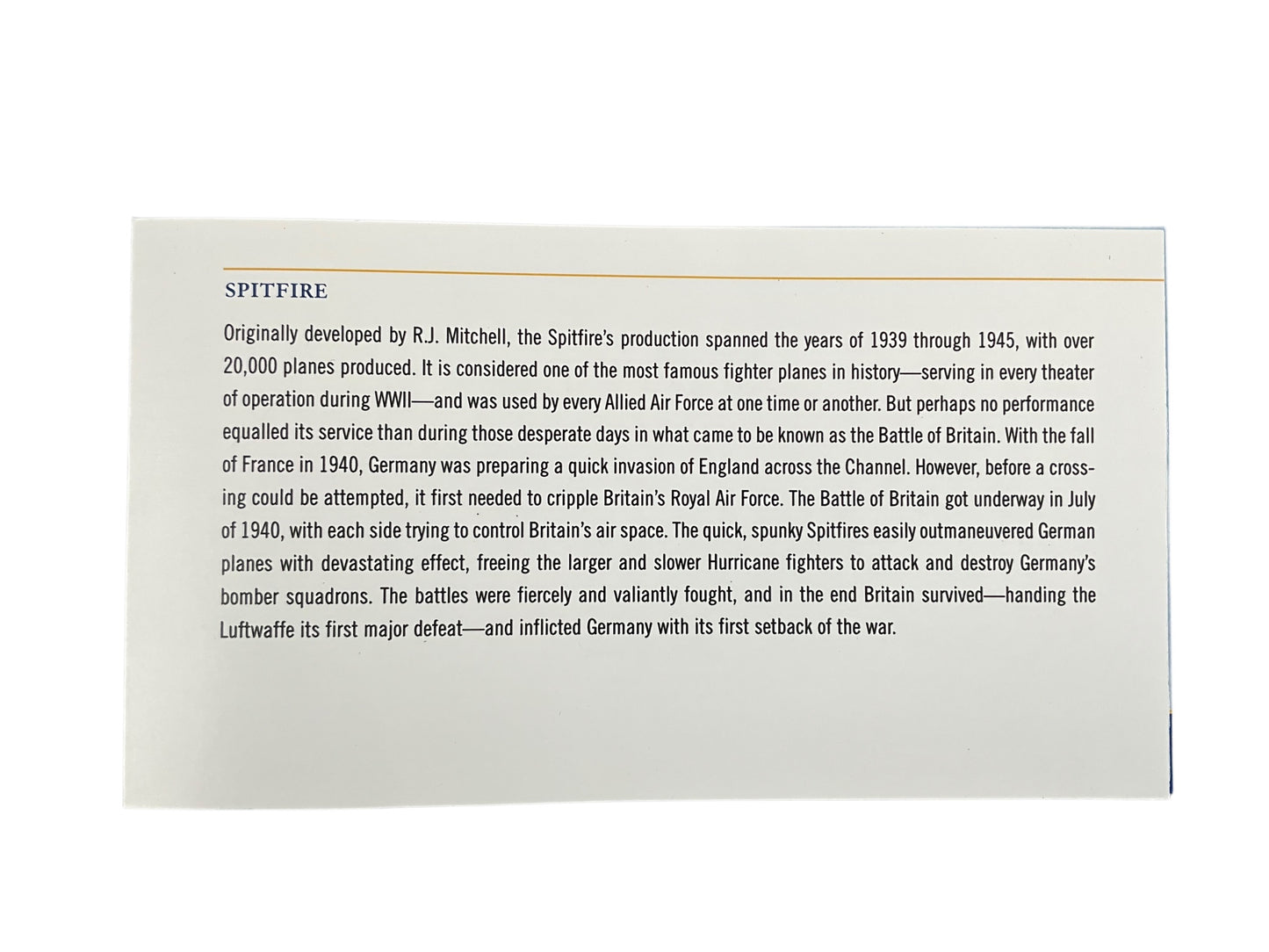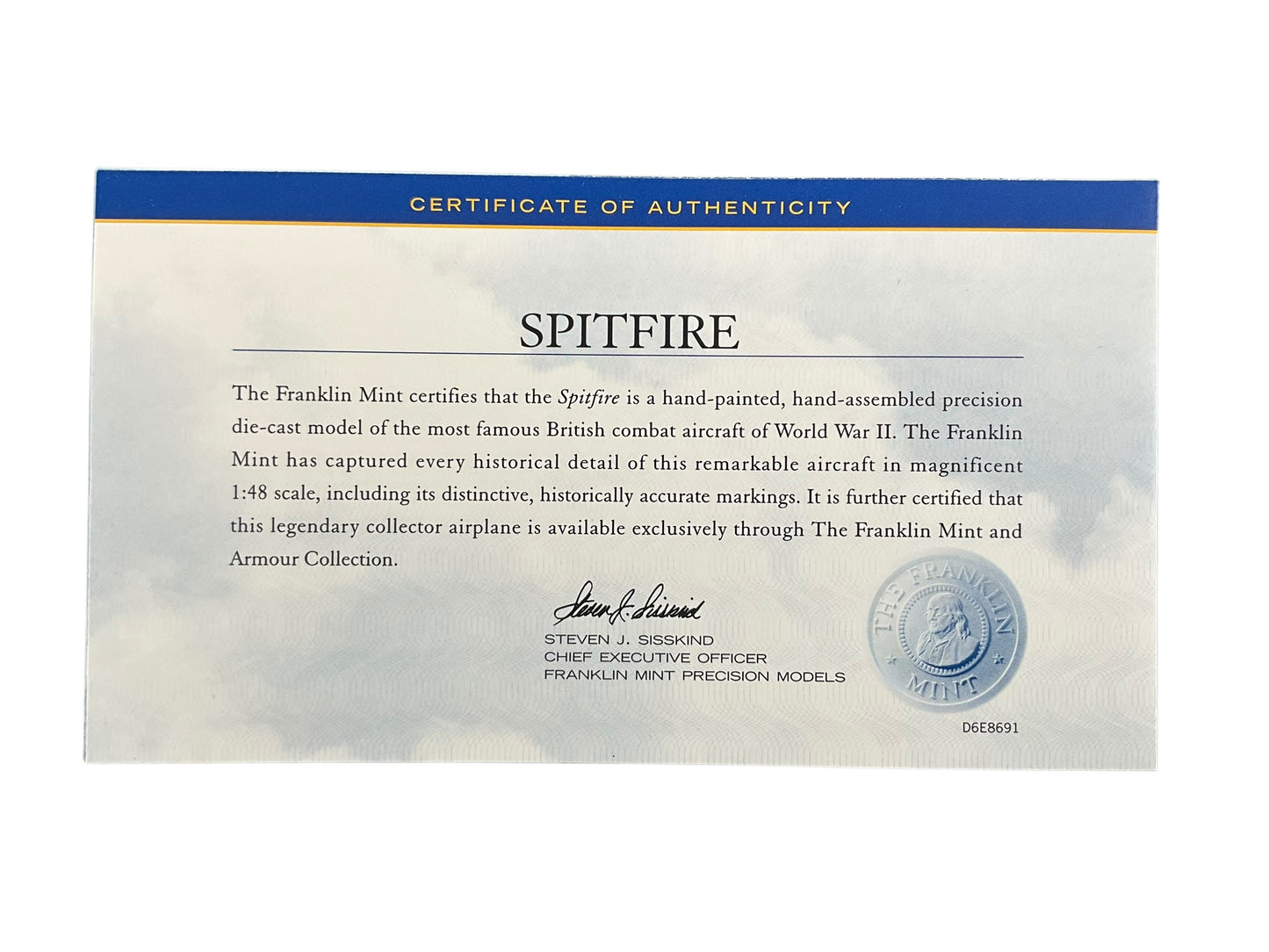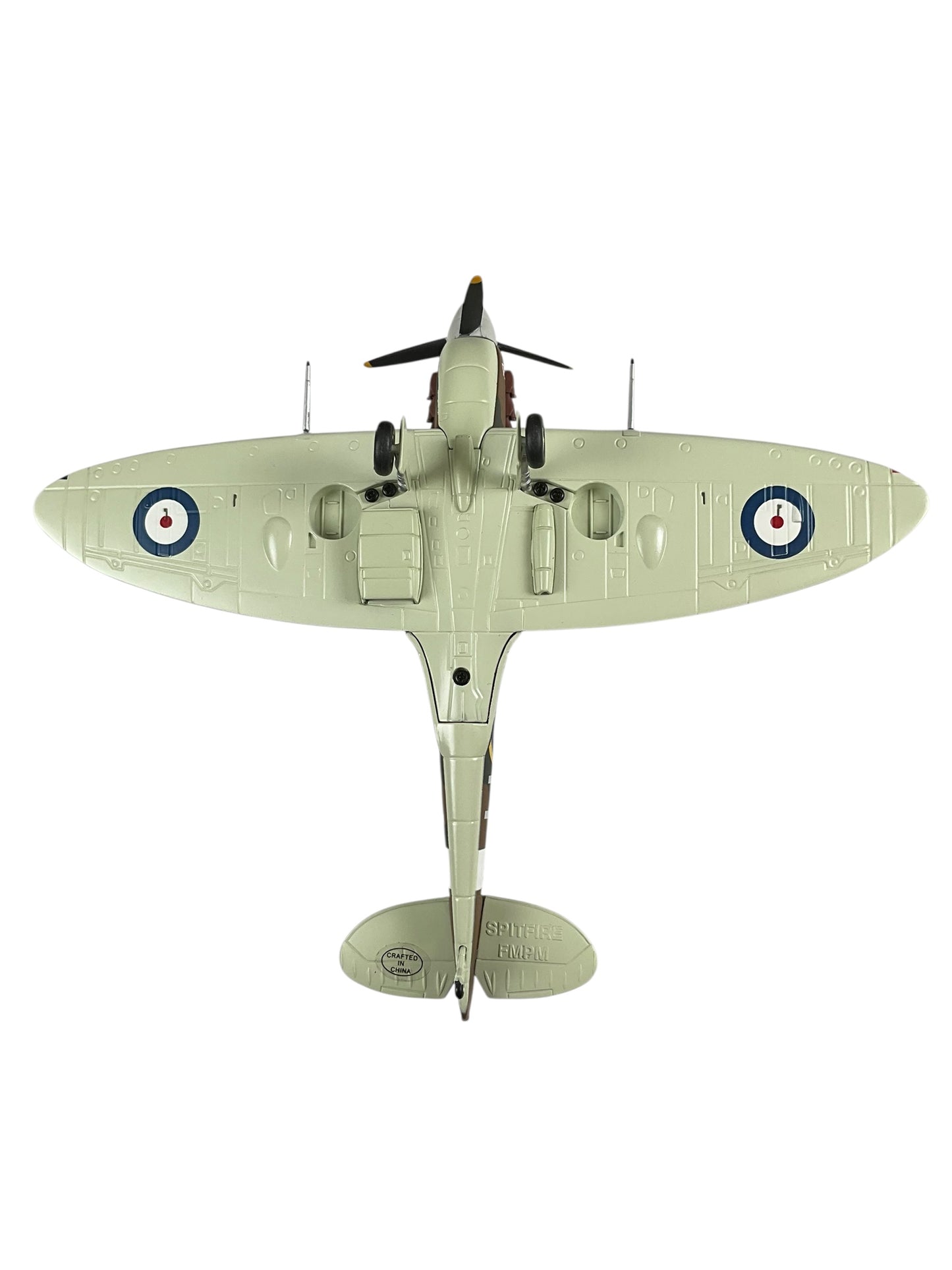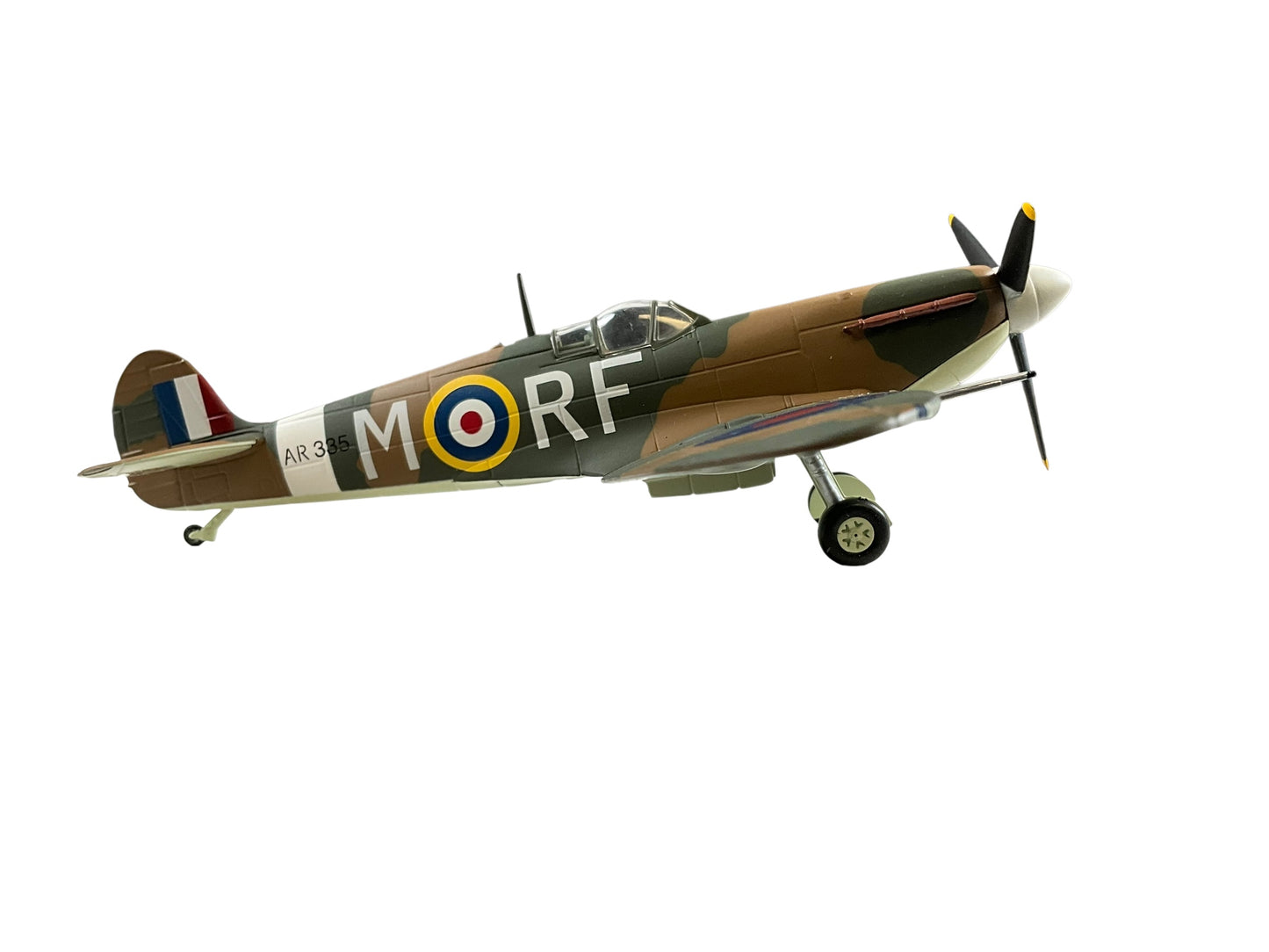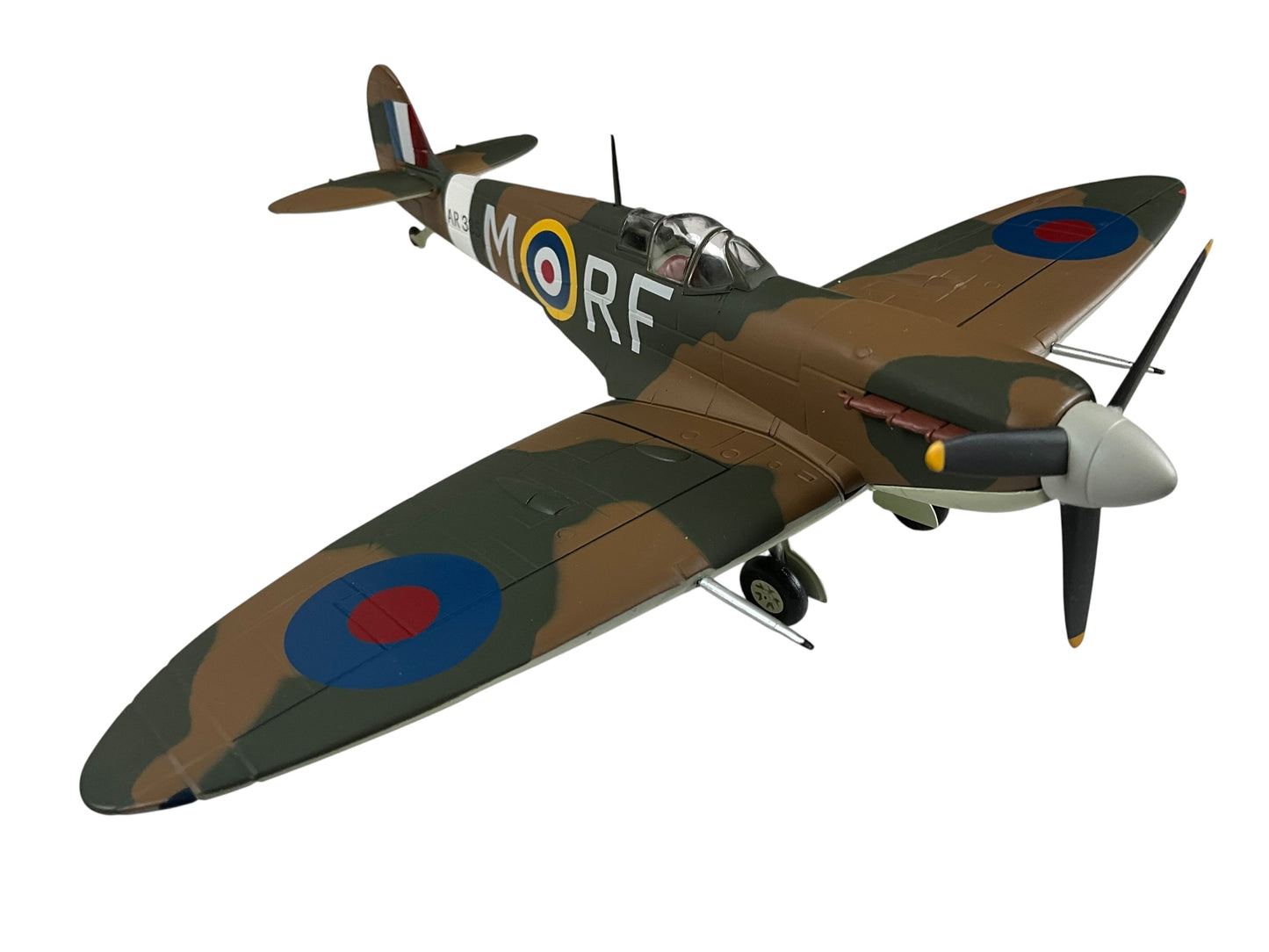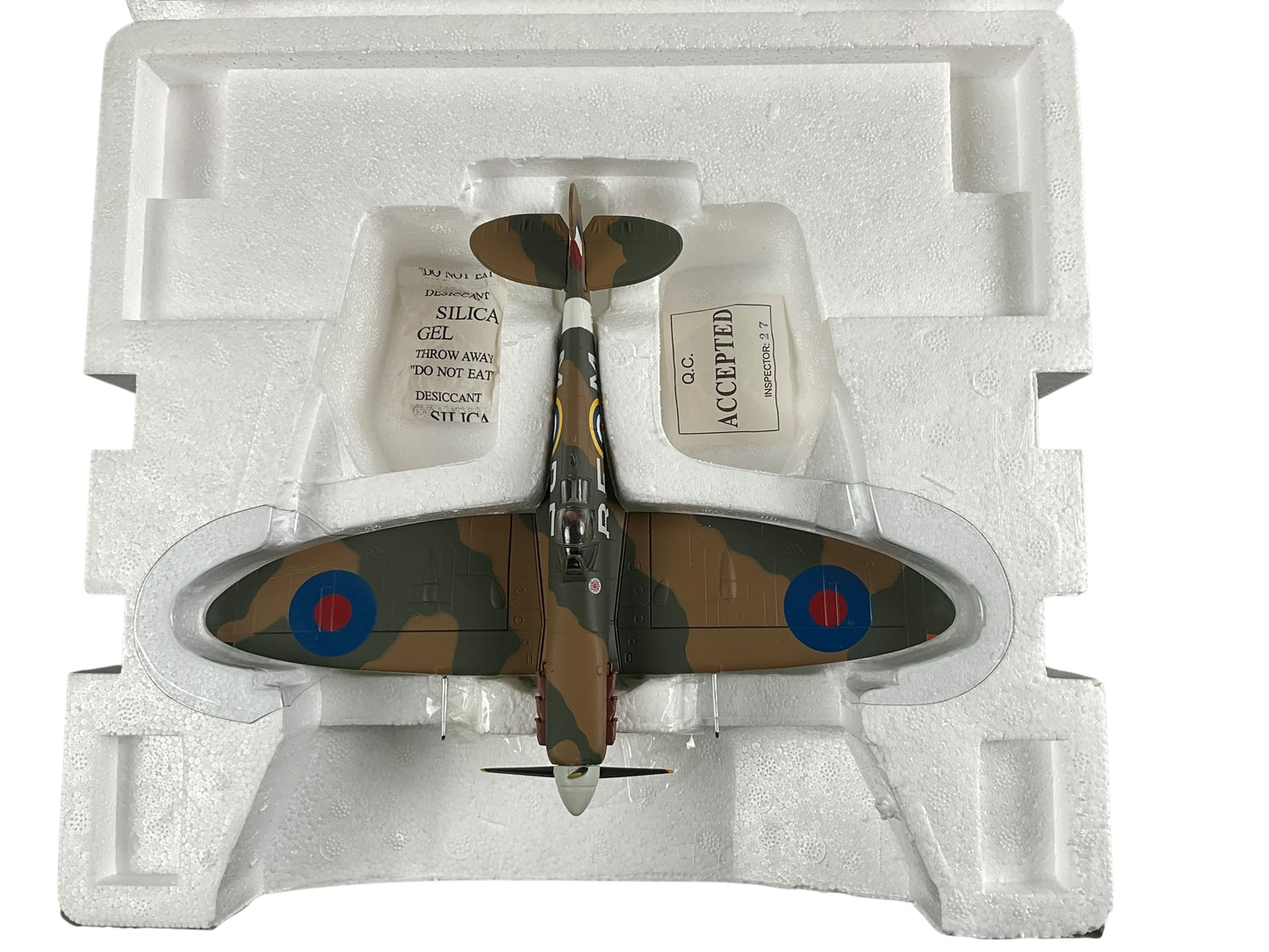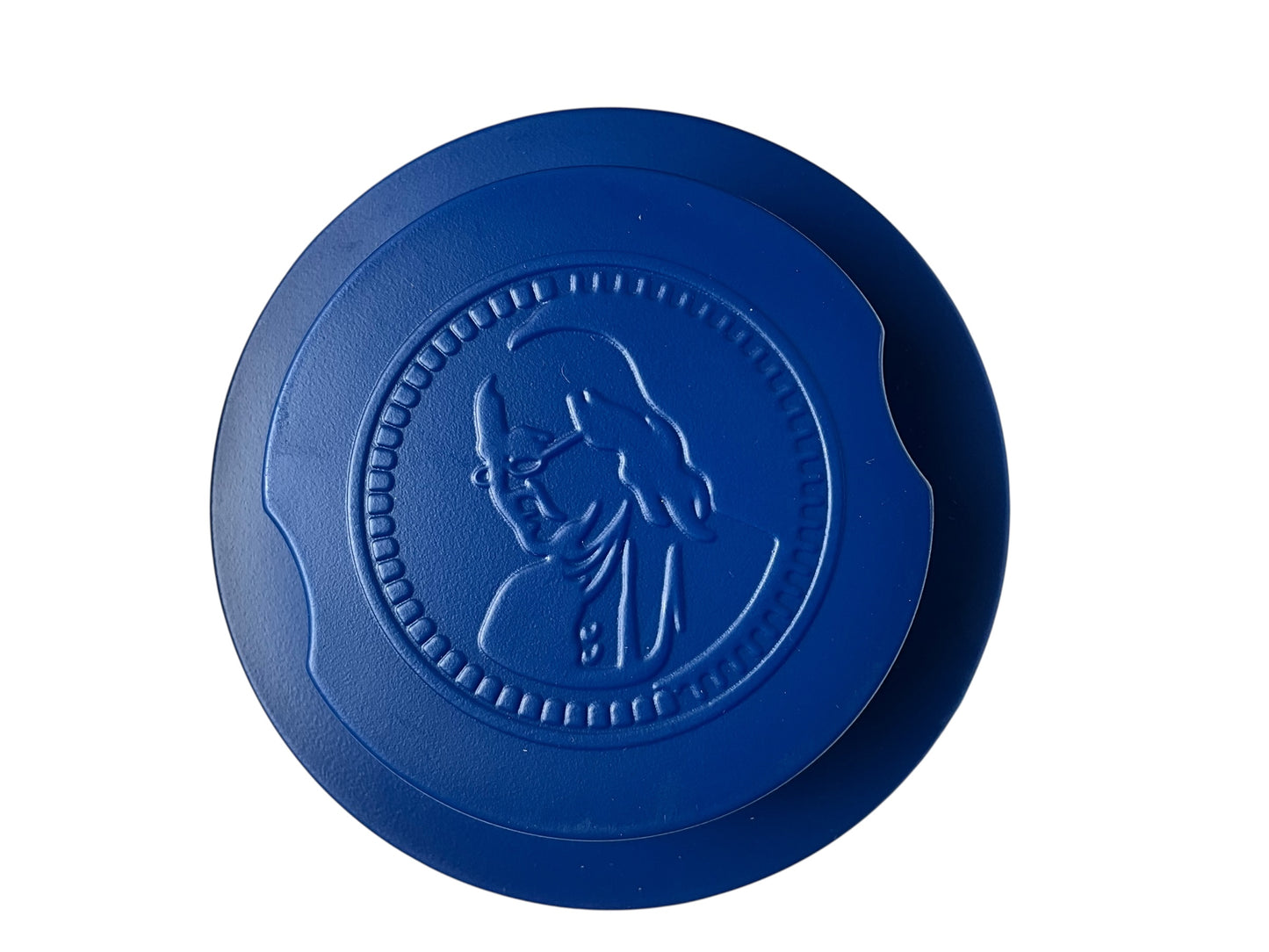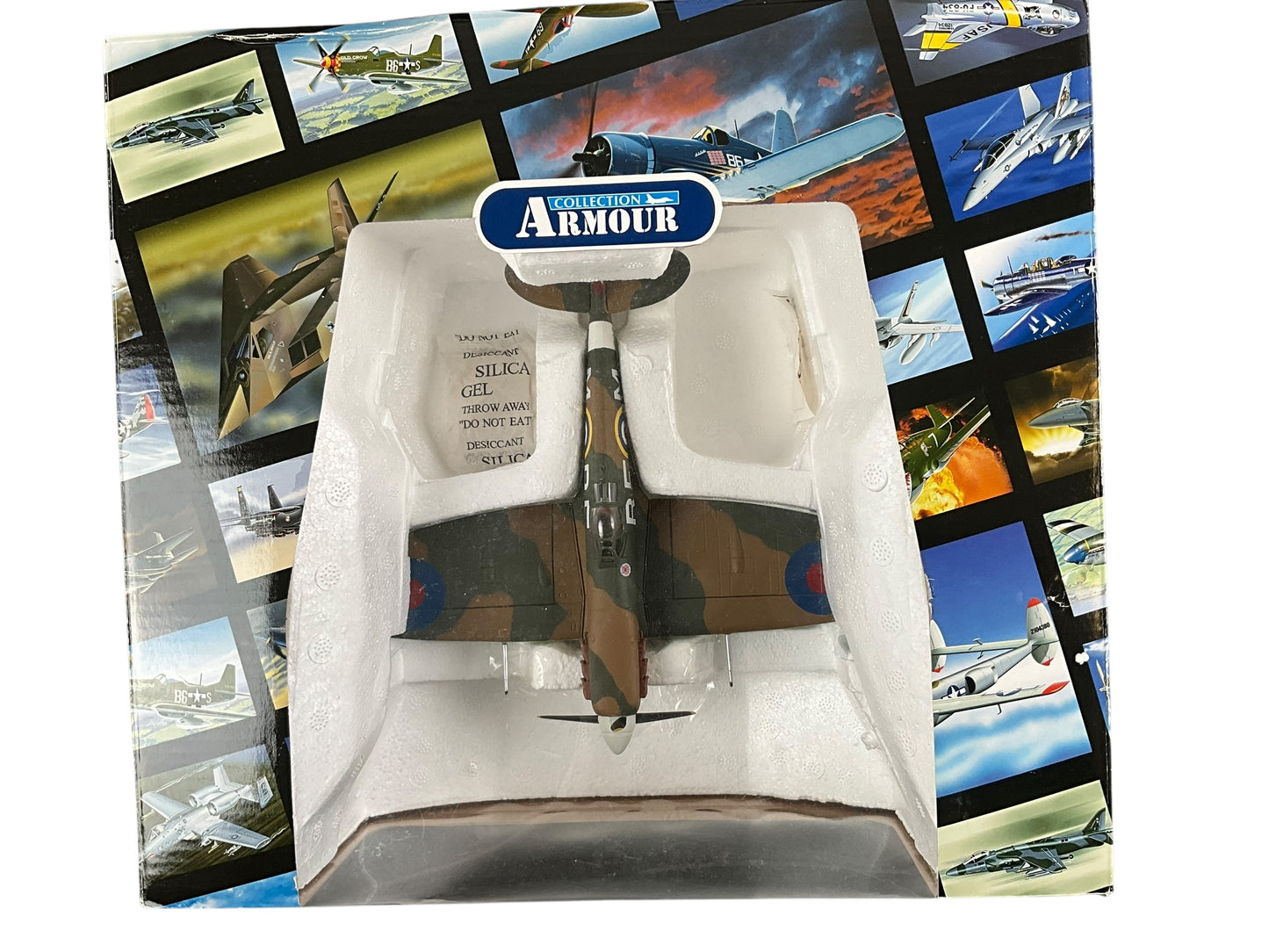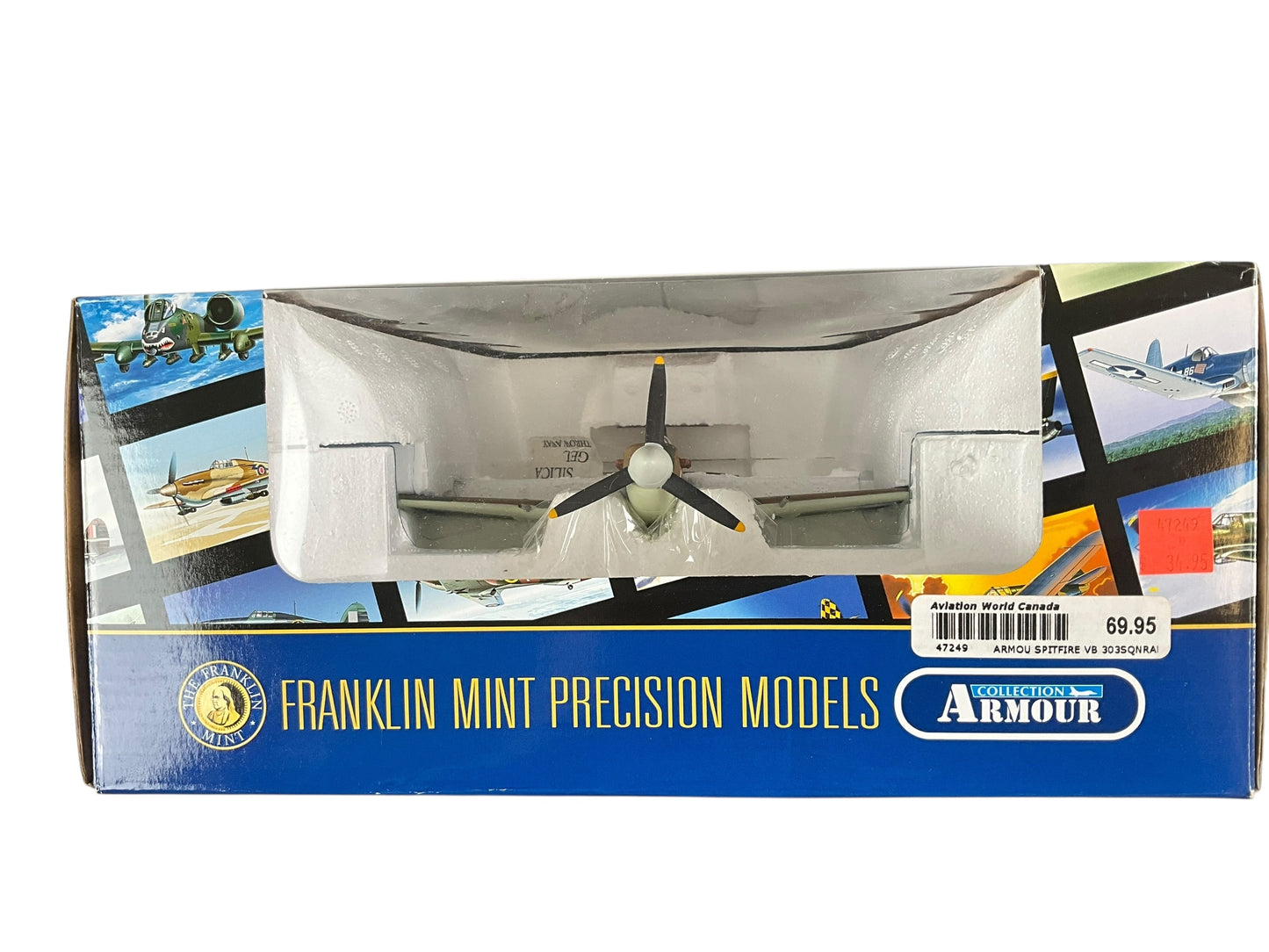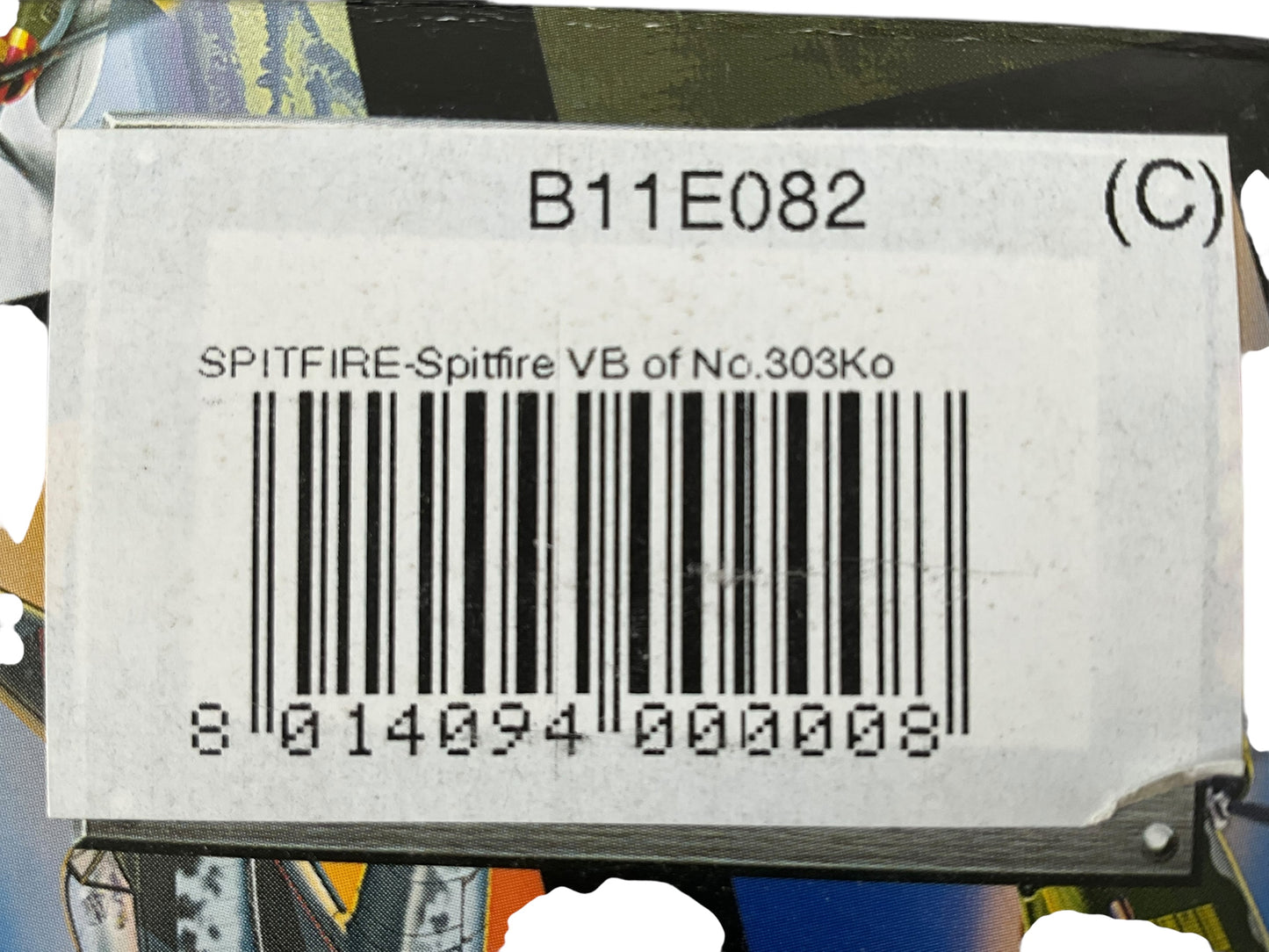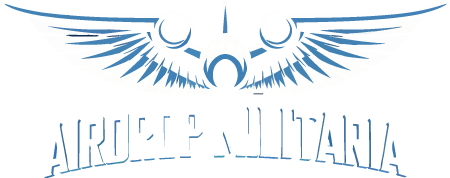airdrop militaria
1/48 Franklin Mint/Armour (B11E082) Supermarine Spitfire MK. Vb (RF-M+ AR335) flown by Jan Falkowski 303 "Kościuszko" Sqdn, Polish Air Force "in Exil" (Limited Edition)
1/48 Franklin Mint/Armour (B11E082) Supermarine Spitfire MK. Vb (RF-M+ AR335) flown by Jan Falkowski 303 "Kościuszko" Sqdn, Polish Air Force "in Exil" (Limited Edition)
Couldn't load pickup availability
1/48 Franklin Mint/Armour (B11E082) Supermarine Spitfire MK. Vb (RF+M / AR335) flown by Jan Falkowski 303 "Kościuszko" Sqdn, Polish Air Force "in Exil" (Limited Edition)
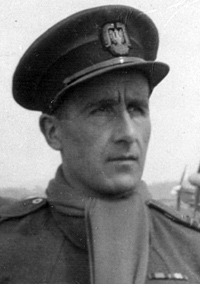
Jan Falkowski
Jan Paweł Falkowski was born on June 26, 1912, in Pohulanka, his father's estate in Lithuania. At the age of two, he left with his parents and brother for Siberia, where his father was tasked with organizing repatriation transports for Poles. The Falkowskis settled in Petropavlovsk on the Ishim River. During revolutionary riots in the streets of the city, his father was shot dead, and shortly afterward, Falkowski's mother also died. A Polish widow, Mrs. Jacyna, took the two orphans under her care. In June 1921, she took them on a journey to Poland. After more than a year of arduous travel by carriage and train, they reached Warsaw on September 23, 1922. His aunt then cared for Falkowski. Thanks to her efforts, he graduated from a private high school and was accepted into the Faculty of Agriculture at Stefan Batory University in Vilnius.
In the summer of 1932, he went to Lviv for a summer pilot training course for students. A year later, he completed his studies (with a certificate of completion), and in 1934, he was accepted into the Air Force Cadet School in Dęblin. On October 15, 1936, he graduated and was assigned as a second lieutenant to the III/4 Fighter Squadron in Toruń. In 1938, he returned to the Air Force as an acrobatics instructor. The war caught up with Falkowski in Dęblin. Initially, he flew from place to place, evacuating PWS-26 aircraft (during one flight, he was attacked by several Bf 109s, but managed to escape). He then received orders to travel to the town of Sokal, where pilots from Dęblin were already gathering. On September 15, the group of "Dęblinians" set off for the Romanian border. After crossing the line, he stole a car, drove it to the Polish consulate in Bucharest, and obtained transit visas. He made his way to France via Yugoslavia and Italy. In the spring of 1940, he became an instructor at the Polish Lyon-Bron air base. After the German attack on France, he was given four pilots with orders to defend the French air base in Cognac. After a three-week wait, Falkowski's flight received Koolhoven FK-58s, but the German pilots failed to shoot down any of the planes. After the French surrender in Saint-Jean-de-Luz, he boarded the Batory and sailed to England on June 23, 1940.
After training on Hurricanes, he was assigned to No. 32 RAF Fighter Squadron on September 12, 1940. On January 16, 1941, during an evening patrol between Portsmouth and Hayling Island, he shot down a single He 111. Accurate defensive fire from the bomber severely damaged the Hurricane. Falkowski decided to jump, but escaped from the cockpit at low altitude. He landed, breaking his leg in the process. He was found by civilians and taken to hospital. The discovery of the parachutist was also reported to the police, who arrived at the hospital and guarded the pilot until the commander of No. 32 RAF Squadron confirmed the Pole's account. After six weeks of treatment, Falkowski was admitted to a convalescent home in Torquay. After removing the cast and having his leg X-rayed, it was discovered that it had healed incorrectly. Falkowski refused to allow it to be broken again and resumed his air service (he returned to his unit in March 1941). Initially, he walked with a cane, but later became accustomed to his shorter leg, compensating for the shortness with a special heel.
On July 29, 1941, he was posted to the Polish 315th "Dębliński" Fighter Squadron, stationed at Northolt. He immediately began participating in offensive operations over France. Within eight days—on August 14, 19, and 21, 1941—he shot down three Messerschmitt Bf 109s. The following month, he shot down two more fighters on September 16 and 21 (including a Fw 190 on September 21, which he was unable to correctly identify because the Focke-Wulfs had only just been introduced into combat). The day after this victory, on September 22, he became commander of Squadron A. On October 24, 1941, he destroyed another Bf 109. From April 12, 1942, he commanded Squadron B.
On June 20, 1942, Falkowski was assigned to the Higher Military School in Peebles, Scotland. In April 1943, he completed the course and was transferred to the State Fire Service Inspectorate in London. On May 18, 1943, he was assigned to No. 316 "Warsaw" Squadron. As its pilot, he participated in several operations over France, after which, at the end of June 1943, he was transferred to No. 303 Squadron. On July 3, 1943, he became commander of this unit, replacing Captain Zygmunt Bieńkowski. On August 22 and September 6, he shot down one Fw 190 with certainty, and on September 23, 1943, he shot down another probably.
On November 22, 1944, Falkowski relinquished command of the "Kościuszkowcy" (Kościuszko Air Force), taking up the position of Polish liaison officer in the RAF's 11th Fighter Group (11 Group). Later, from February 15, 1944, he held the same position in the RAF's 84th Fighter Group (84 Group). He returned to combat flying on January 30, 1945, when he became commander of the 3rd Fighter Wing. While flying over the Dutch coast on March 9, 1945, he was hit by anti-aircraft fire. His plane's engine began to overheat rapidly, so Falkowski turned back over the Netherlands and parachuted. He was constantly covered from the air by Sergeant Stanisław Rutecki. As Falkowski fell, he was fired upon by the Germans from the ground – one bullet pierced his leg. Shortly after landing, a group of German soldiers surrounded the Pole and took him prisoner.
The prisoner was transported for some time across the Netherlands, from one detention center to another. He was then placed under escort on an eastbound train. During a stop at the Zwolle train station, the guard lost sight of him for a moment, a fact Falkowski immediately exploited and began to flee. Losing his pursuers, he found help from a young Dutchman, a member of the resistance movement. He was taken to a safe place, where he hid to wait out the German raid. He then tried to cross the front, but without success. In the meantime, he met Captain Ignacy Olszewski, former commander of the 302nd Squadron, who was in a similar situation. He remained in hiding until the front arrived. Canadian soldiers transferred him to the rear, and on May 9, 1945, he was transported to England.
Falkowski was awarded the Silver Cross of the Virtuti Militari (No. 9338), the Cross of Valor four times, the Air Medal three times, the Field Pilot Badge (No. 861), the Badge of Honour for Wounds and Injuries twice, and the British Distinguished Flying Cross. He was demobilized with the Polish rank of certified major and the British rank of Squadron Leader (previously, he had temporarily held the rank of Acting Wing Commander). In 1947, he emigrated to Canada. He began running a farm about 20 miles from Toronto. He later became an instructor at a civilian pilot school at a nearby airport.
On August 9, 1962, while flying a small Mooney plane from Toronto to Canada's western provinces on business, he became disoriented and, due to fuel starvation, was forced to land on his belly. Accompanying him were his wife, stepson, and a friend. The plane landed in a swamp, far from any civilization. The Mooney's crew would have surely perished had it not been for pilot Carl McGuire, who happened to be flying nearby, spotted the survivors, and summoned help. The Mooney's four passengers were evacuated by helicopter.
In the 1960s, Falkowski wrote his memoirs, published first in Canada as "With the Wind in My Face" (1965, 1971), and later in Poland as "Z Wiatrem w Twarz" (Z Wiatrem w Twarz) (1969, 1990). In 1965, he traveled to Europe, including Warsaw, where he laid a wreath at the Tomb of the Unknown Soldier. Toward the end of his life, he lived in Peterborough, Ontario.
Certified Colonel Jan Falkowski died there after a long illness on July 27, 2001 at the age of 89.
|
Date
|
Plane
|
Unit
|
Destroyed
for sure |
Probably destroyed |
Damaged
|
| 16/01/1941 | Hurricane II, GZ-[?] (Z2984) | 32nd Squadron RAF | He 111 | ||
| August 14, 1941 | Spitfire IIB, PK-K (P8540) | 315 Squadron | Bf 109 | ||
| August 19, 1941 | Spitfire IIB, PK-K (P8540) | 315 Squadron | Bf 109 | ||
| August 21, 1941 | Spitfire IIB, PK-M (P8648) | 315 Squadron | Bf 109 | ||
| 16/09/1941 | Spitfire VB, PK-F (W3619) | 315 Squadron | Bf 109 | ||
| 21/09/1941 | Spitfire VB, PK-F (W3619) | 315 Squadron | Fw 190 | ||
| 24/10/1941 | Spitfire VB, PK-A (W3944) | 315 Squadron | Bf 109 | ||
| August 22, 1943 | Spitfire F.IX, RF-F (MA304) | 303 Squadron | Fw 190 | ||
| 06/09/1943 | Spitfire F.IX, RF-F (MA524) | 303 Squadron | Fw 190 | ||
| 23/09/1943 | Spitfire F.IX, RF-F (MA524) | 303 Squadron | Fw 190 | ||
|
Together
|
9
|
1
|
0
|
Share
